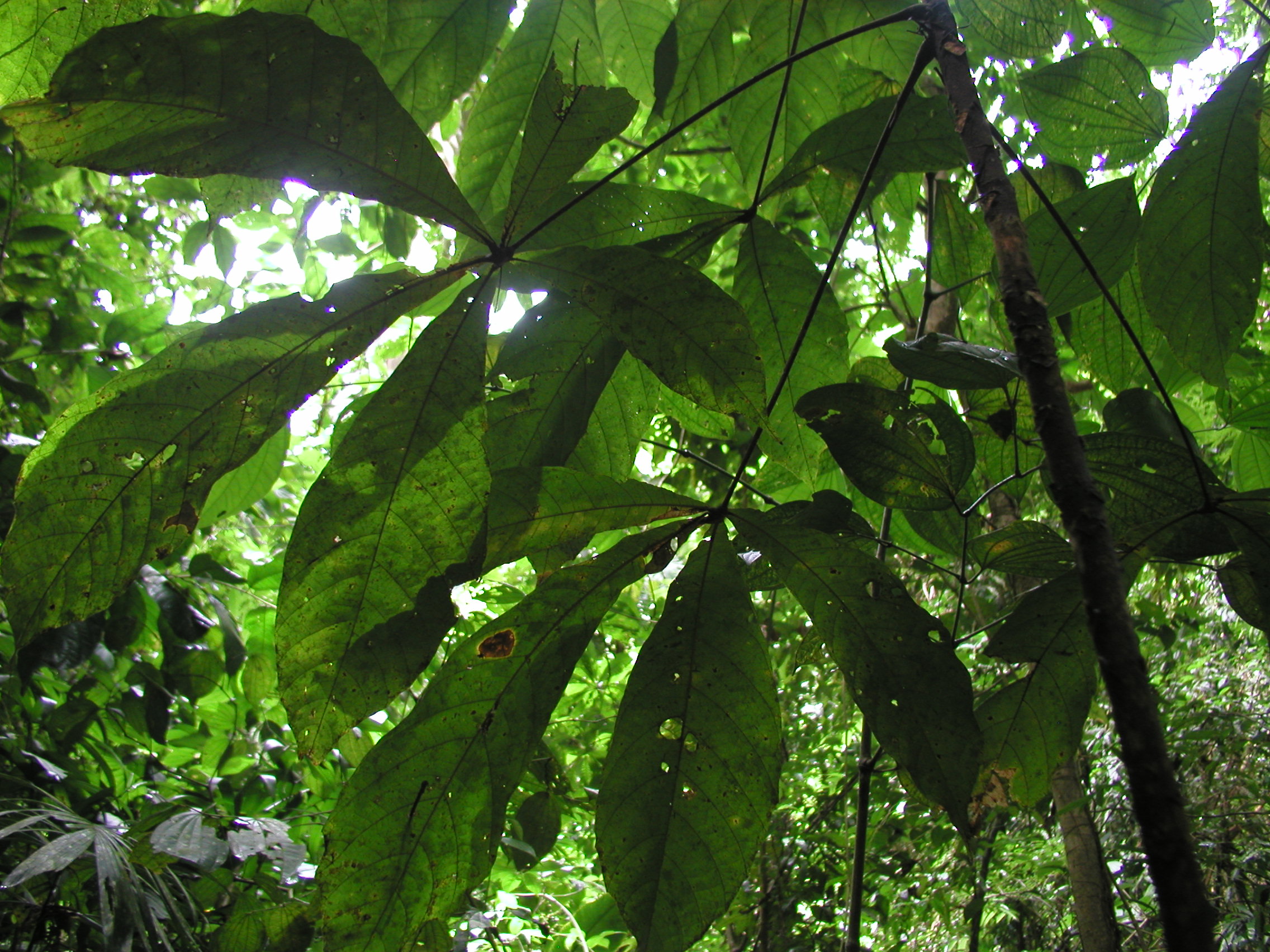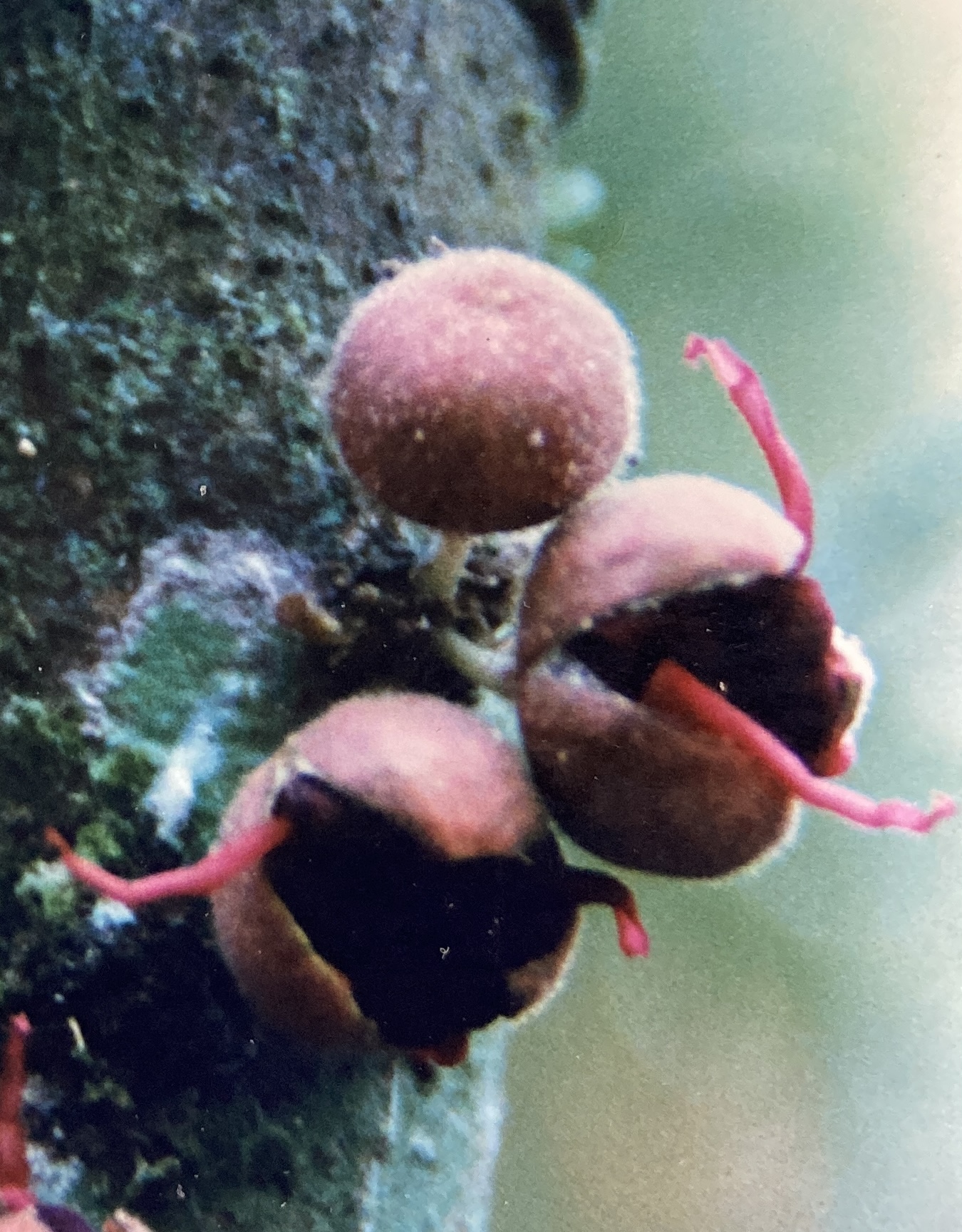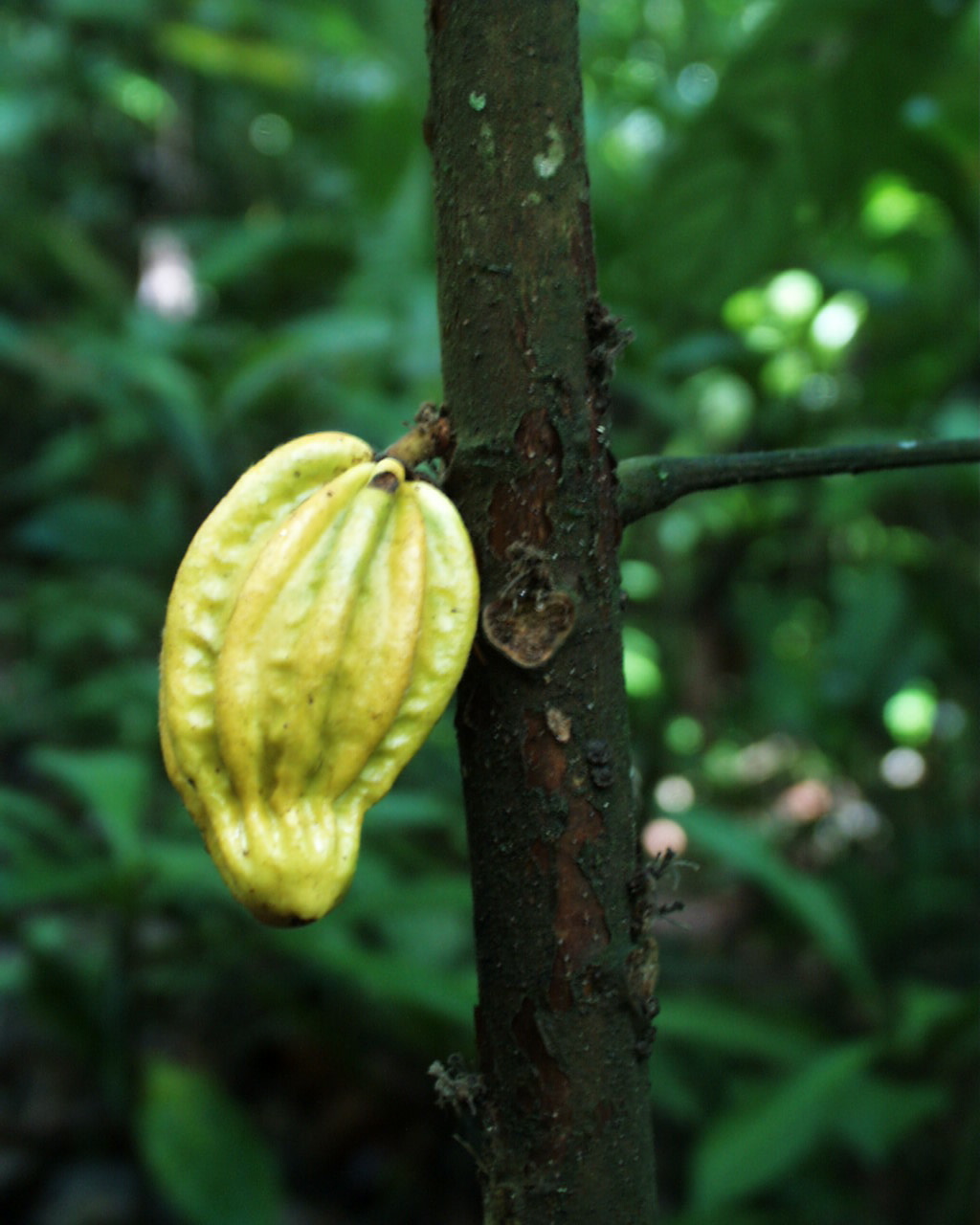Herrania purpurea (Pittier) R.F.Schultes
Sterculiaceae
CACAO DE MICO
Rare evergreen understory or shrub-layer treelet (3-6 m) most notable for its strictly monopodial growth habit, its somber and velveteen flowers, and its conspicuous bright yellow fruits (strongly resembling those of true cacao). Endemic to a small region encompassing Costa Rica and Panama, Herrania is found predominantly in the stagnant, humid, lower layers of the tropical forest, where its spindly trunk and oversized leaves are not liabilities. This species also shows a decided tolerance to – if not preference for – the waterlogged soils of intermittent creekbeds, along which several of the stands known in Manuel Antonio occur. More often than not, Herrania is found growing in clusters of two to four, closely spaced individuals.
Description: Herrania is a monopodial (branchless) treelet of small stature. Its thin, otherwise bare, trunk (5 cm) is topped by a wide head of extended foliage that makes up a simple crown. Herrania bark is mostly smooth and brown, though it carries tiny point lenticels as well as larger, knobby burls from which the flowers emerge. Leaves are very large, alternate, and digitally or palmately compound. Found only at the apex of the bole, they are held outward by long (30 cm) petioles. The narrow leaflets, numbering five and equipped with well developed drip tips, vary in size, ranging from 25-50 cm in length and 10-12 cm in width. The entire foliage cover is shed – but then immediately renewed – in November and December.
Herrania‘s somber and unlikely flowers may appear anywhere along the bare portion of the bole, attached directly to it by short pedestals (5 mm). They begin as rapidly growing, velvety, maroon spheres that resemble the fruiting bodies of wood-rotting fungi. Divided into three, equal, wedge-shaped sections, the outer covering of the orb breaks open and reveals a dusky, maroon corolla. This latter structure (2.5 cm) consists of five petals fused into a wrinkled tube (whose flared end curls backwards on itself), and five, long, tentacle-like staminate appendages. Herrania follows a semi-annual fertility cycle, flowering for about two weeks in late January and early February and again sometime between July and September, with the first event being the more consistent, precise, and productive of the two.
Though relatively few are set, fruits begin as deeply-furrowed, green gourds that can be seen protruding from the old flower calyxes. They reach full size (8 cm by 4 cm) within a month and ripen (by turning yellow) about a month after that. Though conspicuous – exposed at ground level along the bare bole – ripe fruits have been known to persist undisturbed on the trunks for as many as seven more months before finally disappearing. Each fruit contains many, slimy, tan-colored seeds (1 cm), flattened on two sides and embedded in a layer of moist, white pulp. Most ripening occurs in April (corresponding to the February flowering) though a smaller event may be noted around December (resulting from the second episode of fertility).
Similar Species: Monopodial treelets makeup a large percentage of the understory vegetation eking out an existence in the dark and dank lower levels of Manuel Antonio Natioinal Park’s primary forests. Comprised of three distinct species (Herrania, Simaba cedrón, and Talisia nervosa), the subject of this description is the only one with palmately compound leaves (leaves in which the leaflets are attached to a single point on the petiole). Herrania is also, by far, the rarest of the three.
Natural History: Herrania‘s unusual, deep-purple flowers attract flies and beetles as pollinators (Croat, 1978). Bearing its fruits along the leafless bole, Herrania shares its seed-dispersal strategy with true cacao. Mammals of the forest interior – particularly ground-dwelling ones – have little difficulty finding these brightly colored fruits because they are maintained in positions of high visibility – away from the obscuring foliage of the crown. The persistence of the fruits for extended periods on Manuel Antonio trees is perplexing and may be attributable to the diminished diversity of native mammals that remain in this small, island park.
Uses: The white pulp of the fruit is edible and is said to be quite refreshing. Allen (1956) states that the seeds were used by the Bribri Indians to make a bitter drink. Another species of Herrania (H. kanukuensis), found growing in the Amazon, is said to possess one of the best tasting fruits in all of that region (Plotkin, 1993).
Distribution: In Manuel Antonio, Herrania is restricted to the wettest of low-lying, primary forests where soils are nearly always saturated. The species is also found in Carara and Cabo Blanco. Of limited range, Herrania is endemic to a small region shared by Costa Rica and Panama.



